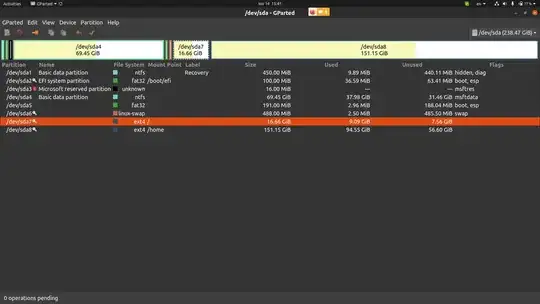i run Ubuntu VMs in VMware.
I installed with a partition of 100 GB default LVM.
Only 50 GB are used. 50 GB are unused.
I want to grow the / filesystem to use all available space.
I want to have the option to incease the partition in VMware and grow the filesystem. I did this without LVM by booting frmo gparted CD and increase partition and grow filsystem.
Which are the newest, most comfortable tools?
Definetely no dual boot needed.
GPT to grow behind 2 TB is a must,
kind regards,
Bodo

df -h? – raj Jan 14 '21 at 13:15/dev/sdarefers to the entire device, not to a partition. Does thedfcommand show any other partitions besides / ? – raj Jan 14 '21 at 13:37lsblkcommand. It should show all disk devices and how the partitions are assigned on them. – raj Jan 14 '21 at 13:50